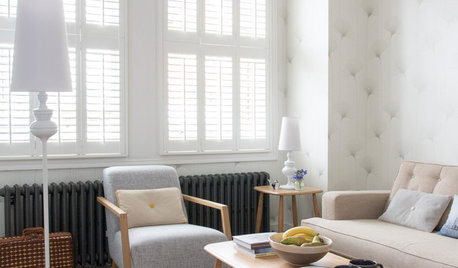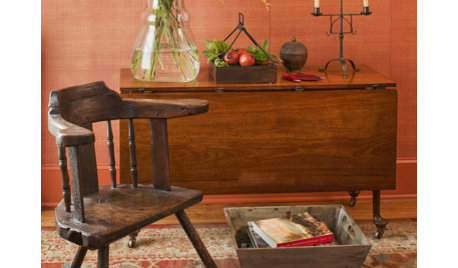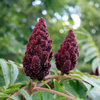if you never have damping off.......(help me!)
imagreenthumb
18 years ago
Related Stories

COFFEE WITH AN ARCHITECT10 Tips to Help You Put Off Procrastinating
Blank page staring at you? Look it in the eye, then vanquish it in 10 only slightly meandering steps
Full Story
DECORATING GUIDES10 Look-at-Me Ways to Show Off Your Collectibles
Give your prized objects center stage with a dramatic whole-wall display or a creative shelf arrangement
Full Story
DECORATING GUIDESLiving Room Features That Never Go Out of Style
These key pieces will help your living room keep its good looks, no matter what's in fashion
Full Story
DECORATING GUIDES15 Home Decor Accessories That Never Disappoint
A designer's top go-to accessories can help tell your story, no matter what your home's style
Full Story
DECORATING GUIDESRadiator Covers Like You’ve Never Seen
From custom to DIY, these 10 ideas will help the radiator blend in, become a storage standout or both
Full Story
HOUSEKEEPINGThree More Magic Words to Help the Housekeeping Get Done
As a follow-up to "How about now?" these three words can help you check more chores off your list
Full Story
BATHROOM WORKBOOKStandard Fixture Dimensions and Measurements for a Primary Bath
Create a luxe bathroom that functions well with these key measurements and layout tips
Full Story
SELLING YOUR HOUSE10 Low-Cost Tweaks to Help Your Home Sell
Put these inexpensive but invaluable fixes on your to-do list before you put your home on the market
Full Story
PETS6 Ways to Help Your Dog and Landscape Play Nicely Together
Keep your prized plantings intact and your dog happy too, with this wisdom from an expert gardener and dog guardian
Full Story
MOVINGRelocating Help: 8 Tips for a Happier Long-Distance Move
Trash bags, houseplants and a good cry all have their role when it comes to this major life change
Full Story






roxy77
amcorrigan
Related Professionals
Aurora Landscape Contractors · Bridgeport Landscape Contractors · Byram Landscape Contractors · Cliffside Park Landscape Contractors · Dallas Landscape Contractors · New Providence Landscape Contractors · South Hackensack Landscape Contractors · Ferguson Landscape Contractors · Buena Park Fence Contractors · Monrovia Fence Contractors · Mount Pleasant Fence Contractors · Naperville Fence Contractors · North Hollywood Fence Contractors · Olney Fence Contractors · Ramona Fence Contractorscherylk
bakemom_gw
leslies
rusty_blackhaw
sharont
calistoga_al ca 15 usda 9
beleaf
pickwick
mbravebird
imagreenthumbOriginal Author
triple_b
Loretta NJ Z6
pickwick
geordigirl
zengeos
shellva
arjo_reich
arjo_reich
ms_minnamouse
ms_minnamouse
ms_minnamouse
davesgardengirl
sheltieche
Karen Pease
hatchjon
mgfranz_yahoo_com
flora_uk
californian
northerner_on
soilent_green
loribee2
susan2010